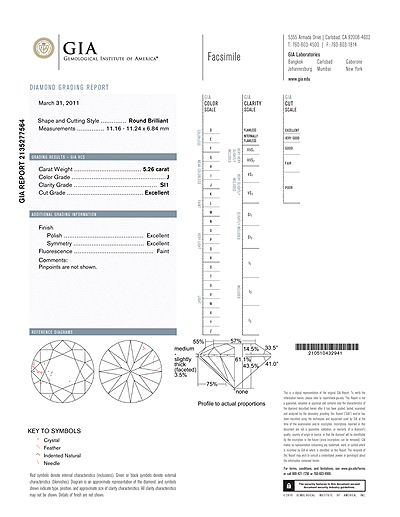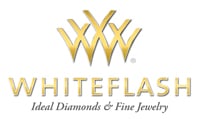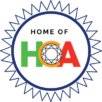Diamond Grading – The AGSL Way : Part One
*The following article is part of a series written in collaboration with the American Gem Society Laboratories. Special thanks to Alethea Inns, C.G., Director of Diamond Grading at AGSL for her technical contributions.
In the internet age consumers expect to know the details of their purchases more intimately, especially the significant ones. In-depth and comprehensive information is more accessible to the consumer today than ever before. Informed diamond shoppers understand that certain characteristics that might not be obvious to the casual shopper may in fact be significant in terms of value and performance. These factors are revealed in high quality laboratory reports. Moreover, laboratory grading provides expert, unbiased, third-party evaluation that is not vested in the sale of the diamond.
One major trend is that today’s diamond consumers are coming to understand that diamond cut quality is arguably the most important of the diamond 4 Cs. It is also the most difficult to understand and assess. A laboratory report that includes an overall cut grade is extremely beneficial. The American Gem Society Laboratories (AGSL) leads the industry in diamond cut quality analysis with their Light Performance grading system. While several other labs have recently adopted some form of cut grading on a limited number of diamond shapes, the AGSL has developed the only scientifically vetted, repeatable and accurate system for analyzing cut quality on round diamonds as well as a variety of other diamond shapes.
A lab grading report not only serves to positively identify the diamond or gemstone and any treatments that a jeweler or gemologist may not be able to detect, but also enables comparison to other like items for shopping purposes. As e-commerce becomes ever more important as a marketing channel, the accurate and objective information contained in a high quality lab report enables “apples to apples” shopping, empowering the consumer to select the best values from well beyond their local area. The A CUT ABOVE® is an example of a branded Super Ideal Diamond that is evaluated and documented in elaborate detail, and can easily be compared to other branded diamonds provided the competing brands make available the necessary data.
Laboratory Reports: Samples

GIA Diamond Report

AGSL Diamond Report
A laboratory report from a reputable lab verifies that representations made about the diamond at time of purchase are accurate, and that those representations are made by an expert and unbiased third party. It also serves the same purpose in a potential transaction in the future should the consumer ever decide to sell or trade the diamond.
Inscription services are available today in some laboratories providing an easy way to identify one’s own diamond. This can add a significant element of peace of mind to the consumer by allowing for simple visual identification. Not only does inscription enable self verification by the consumer, but it enhances the prospects that a lost or stolen diamond will be properly reunited with its owner should it be recovered.
For consumers interested in insuring their jewelry, a laboratory report can help an appraiser to accurately establish value. This ensures that premiums paid are in line with true quality and if a loss is suffered there is a higher degree of certainty that it will be replaced with “like kind and quality.”
Possibly the best benefit of a laboratory report on a diamond today derives from the presence of sophisticated synthetic and treated diamonds in the market. Recent technology has given us true synthetic diamonds (the first synthetics were actually created in the 1950’s, but have only been prevalent in the market since the 1990’s), as well as High Pressure High Temperature treated diamonds. In the past there were many simulated diamonds in the market that only appeared to look like diamonds. Most were relatively easy to spot even by the average consumer, and knowledgeable jewelers could easily identify them, but the hi-tech synthetics of today are difficult to conclusively identify even by most jewelers and gemologists. Definitive tests can only be performed at laboratories with highly sophisticated and expensive equipment and specially trained gemologists who can read and interpret the data from these tests.
Laboratory reports add value and they also involve cost. And it is not cost effective for every diamond to be lab certified. But consumers who are in the market for a diamond of significance should give strong consideration to insisting on a diamond graded by a reputable laboratory.
by Bryan Boyne, G.G.
Vice President
Whiteflash Inc.

See the other installments of this series:
Part Two: Diamond Laboratory Process- Basic Functions and Procedures
Part Three: AGS Laboratory – Color Grading of Diamonds
Part Four: AGS Laboratories – Clarity Grading of Diamonds
Click here to discuss on the Forum














